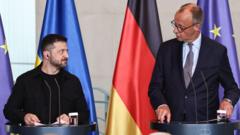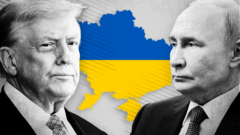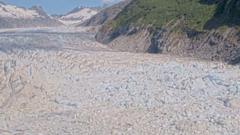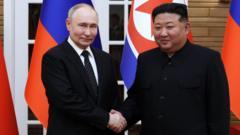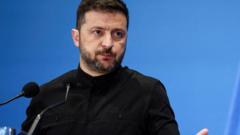The summit reflects a unique historical significance and aims to address critical diplomatic tensions.
**Trump and Putin Set for Historic Meeting in Alaska on August 15**

**Trump and Putin Set for Historic Meeting in Alaska on August 15**
Key discussions will focus on resolving the ongoing conflict in Ukraine.
---
The United States and Russia have confirmed that Presidents Donald Trump and Vladimir Putin will meet on Friday, August 15, in Anchorage, Alaska, to address the escalating war in Ukraine. This highly anticipated encounter comes on the heels of Trump setting a deadline for Russia to agree to a ceasefire, with potential sanctions looming if no agreement is reached. Both leaders aim to use this meeting, the result of multiple rounds of talks this summer that have failed to yield tangible progress, to explore means to establish peace.
The choice of Alaska as the meeting location carries historical significance, echoing the 1867 purchase of the territory by the U.S. from Russia. As pointed out by Russian presidential aide Yuri Ushakov, the geographical proximity of the two nations, separated only by the Bering Strait, makes Alaska a logical venue for such an important summit. The last major diplomatic event hosted in Alaska occurred in March 2021, when the Biden administration met with Chinese officials, which ended in notable tensions.
The summit is scheduled to take place at Joint Base Elmendorf-Richardson in Anchorage, a major U.S. military site. Trump has emphasized the importance of this meeting, which he considers a "feel-out" opportunity to probe Putin's intentions regarding a ceasefire. The White House has described it as primarily a listening exercise, downplaying expectations of a ceasefire agreement.
CNN reported that Trump expressed disappointment with Putin’s recent actions and set an August 8 deadline for an immediate ceasefire. The summit will not include Ukrainian President Volodymyr Zelensky in attendance, although Trump indicated he might call Zelensky immediately after their discussions. The U.S. leader is anticipated to speak with Zelensky and European leaders prior to the bilateral summit.
While both countries express a desire for peace, their positions diverge significantly. Trump aims to negotiate the return of Russian-held territories to Ukraine but acknowledges that any resolution may involve complex territorial "swaps." Ukraine’s firm stance denies any such concessions, as President Zelensky insists that any agreements must include Ukraine's input.
As the geopolitical stakes continue to rise, the dynamics between Russia, Ukraine, and the U.S. reflect the complexities of seeking a resolution to the ongoing conflict. The summit's outcome may shape future relations and territorial agreements, but both sides face significant hurdles in reaching mutual understanding.
The United States and Russia have confirmed that Presidents Donald Trump and Vladimir Putin will meet on Friday, August 15, in Anchorage, Alaska, to address the escalating war in Ukraine. This highly anticipated encounter comes on the heels of Trump setting a deadline for Russia to agree to a ceasefire, with potential sanctions looming if no agreement is reached. Both leaders aim to use this meeting, the result of multiple rounds of talks this summer that have failed to yield tangible progress, to explore means to establish peace.
The choice of Alaska as the meeting location carries historical significance, echoing the 1867 purchase of the territory by the U.S. from Russia. As pointed out by Russian presidential aide Yuri Ushakov, the geographical proximity of the two nations, separated only by the Bering Strait, makes Alaska a logical venue for such an important summit. The last major diplomatic event hosted in Alaska occurred in March 2021, when the Biden administration met with Chinese officials, which ended in notable tensions.
The summit is scheduled to take place at Joint Base Elmendorf-Richardson in Anchorage, a major U.S. military site. Trump has emphasized the importance of this meeting, which he considers a "feel-out" opportunity to probe Putin's intentions regarding a ceasefire. The White House has described it as primarily a listening exercise, downplaying expectations of a ceasefire agreement.
CNN reported that Trump expressed disappointment with Putin’s recent actions and set an August 8 deadline for an immediate ceasefire. The summit will not include Ukrainian President Volodymyr Zelensky in attendance, although Trump indicated he might call Zelensky immediately after their discussions. The U.S. leader is anticipated to speak with Zelensky and European leaders prior to the bilateral summit.
While both countries express a desire for peace, their positions diverge significantly. Trump aims to negotiate the return of Russian-held territories to Ukraine but acknowledges that any resolution may involve complex territorial "swaps." Ukraine’s firm stance denies any such concessions, as President Zelensky insists that any agreements must include Ukraine's input.
As the geopolitical stakes continue to rise, the dynamics between Russia, Ukraine, and the U.S. reflect the complexities of seeking a resolution to the ongoing conflict. The summit's outcome may shape future relations and territorial agreements, but both sides face significant hurdles in reaching mutual understanding.

